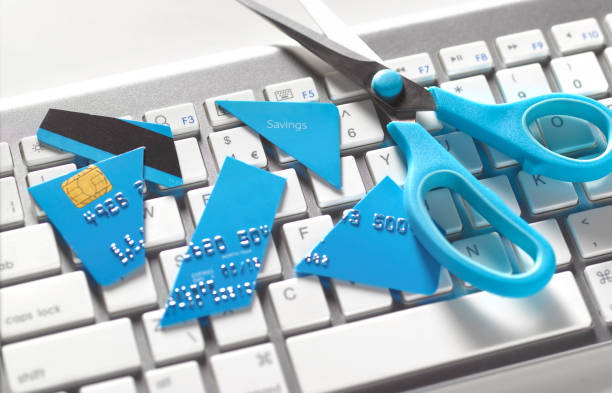
Within the framework of personal finance, few products are as perilous and predatory as the payday loan. Marketed as a quick solution for a temporary cash shortfall, these loans often function as a devastating trap, ensnaring vulnerable individuals in a cycle of debt that can be nearly impossible to escape. Understanding the mechanics and true cost of these instruments is not just a matter of financial literacy; it is a critical defense mechanism for preserving economic stability. Payday loans represent the antithesis of sound financial management, exploiting desperation and creating long-term crises from short-term problems.The structure of a payday loan is designed for entanglement. A borrower typically writes a post-dated check for the loan amount plus a fee, receiving a smaller sum in cash. These fees, which might seem manageable at first glance, translate into astronomical annual percentage rates that often exceed 400%. The loan term is usually aligned with the borrower’s next payday, hence the name, creating an immediate obligation that must be met in full. This is where the trap is sprung. Because the loan consumes such a significant portion of the upcoming paycheck, the borrower is often left without enough to cover their ongoing expenses, forcing them to take out another loan to bridge the new gap. This begins a relentless cycle of borrowing and re-borrowing.The personal finance strategy for avoiding this trap is built on prevention and alternatives. The most powerful defense is the establishment of an emergency fund, however modest, to absorb unexpected expenses without resorting to predatory lending. If a shortfall occurs, every other option—negotiating a payment plan with a creditor, seeking assistance from a community organization, or using a credit card cash advance—is invariably less damaging than a payday loan. Even a late payment fee on a bill is a one-time cost, not a debt spiral.Ultimately, navigating away from
payday loans requires a shift in perspective, recognizing them not as a lifeline but as an anchor. Financial well-being is achieved through planning and patience, not through high-cost shortcuts that jeopardize future security. Education on this topic is a form of empowerment, providing individuals with the knowledge to identify dangerous products and the confidence to pursue healthier alternatives. Breaking free from this cycle is a fundamental step toward reclaiming financial autonomy and building a future defined not by desperation, but by resilience and control.



 Within the framework of personal finance, few products are as perilous and predatory as the payday loan. Marketed as a quick solution for a temporary cash shortfall, these loans often function as a devastating trap, ensnaring vulnerable individuals in a cycle of debt that can be nearly impossible to escape. Understanding the mechanics and true cost of these instruments is not just a matter of financial literacy; it is a critical defense mechanism for preserving economic stability. Payday loans represent the antithesis of sound financial management, exploiting desperation and creating long-term crises from short-term problems.The structure of a payday loan is designed for entanglement. A borrower typically writes a post-dated check for the loan amount plus a fee, receiving a smaller sum in cash. These fees, which might seem manageable at first glance, translate into astronomical annual percentage rates that often exceed 400%. The loan term is usually aligned with the borrower’s next payday, hence the name, creating an immediate obligation that must be met in full. This is where the trap is sprung. Because the loan consumes such a significant portion of the upcoming paycheck, the borrower is often left without enough to cover their ongoing expenses, forcing them to take out another loan to bridge the new gap. This begins a relentless cycle of borrowing and re-borrowing.The personal finance strategy for avoiding this trap is built on prevention and alternatives. The most powerful defense is the establishment of an emergency fund, however modest, to absorb unexpected expenses without resorting to predatory lending. If a shortfall occurs, every other option—negotiating a payment plan with a creditor, seeking assistance from a community organization, or using a credit card cash advance—is invariably less damaging than a payday loan. Even a late payment fee on a bill is a one-time cost, not a debt spiral.Ultimately, navigating away from
Within the framework of personal finance, few products are as perilous and predatory as the payday loan. Marketed as a quick solution for a temporary cash shortfall, these loans often function as a devastating trap, ensnaring vulnerable individuals in a cycle of debt that can be nearly impossible to escape. Understanding the mechanics and true cost of these instruments is not just a matter of financial literacy; it is a critical defense mechanism for preserving economic stability. Payday loans represent the antithesis of sound financial management, exploiting desperation and creating long-term crises from short-term problems.The structure of a payday loan is designed for entanglement. A borrower typically writes a post-dated check for the loan amount plus a fee, receiving a smaller sum in cash. These fees, which might seem manageable at first glance, translate into astronomical annual percentage rates that often exceed 400%. The loan term is usually aligned with the borrower’s next payday, hence the name, creating an immediate obligation that must be met in full. This is where the trap is sprung. Because the loan consumes such a significant portion of the upcoming paycheck, the borrower is often left without enough to cover their ongoing expenses, forcing them to take out another loan to bridge the new gap. This begins a relentless cycle of borrowing and re-borrowing.The personal finance strategy for avoiding this trap is built on prevention and alternatives. The most powerful defense is the establishment of an emergency fund, however modest, to absorb unexpected expenses without resorting to predatory lending. If a shortfall occurs, every other option—negotiating a payment plan with a creditor, seeking assistance from a community organization, or using a credit card cash advance—is invariably less damaging than a payday loan. Even a late payment fee on a bill is a one-time cost, not a debt spiral.Ultimately, navigating away from 

